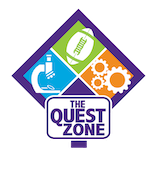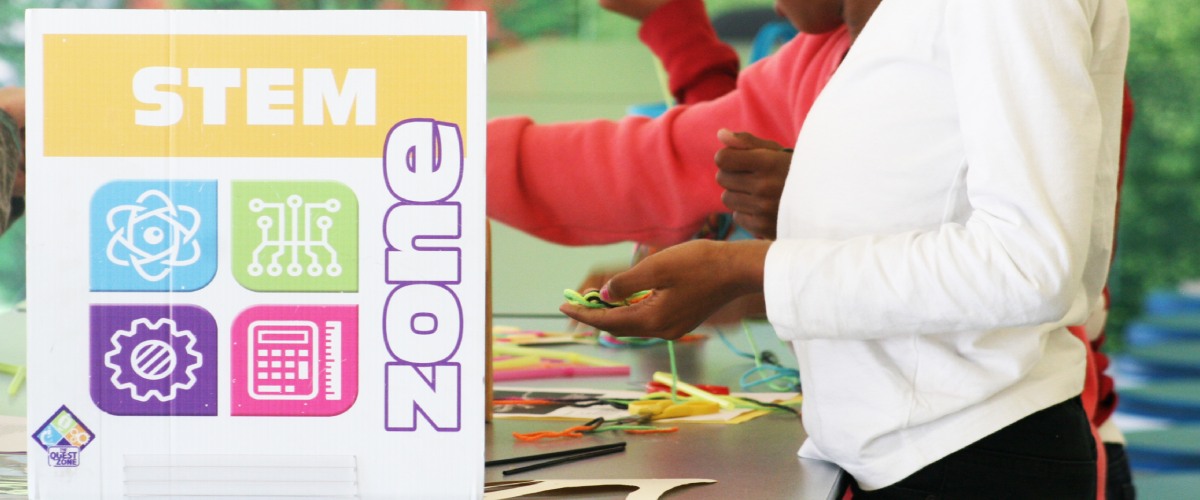S.T.E.M. (Science, Technology, Engineering, and Math) is quite the buzz word these days when it comes to educating our children. But what does it really mean? And why is it so important?
This month we dug into the details with Katherine Allen, Education Research Analyst with IMPAQ International, to get some answers around all the STEM buzz! The Quest Zone recently partnered with IMPAQ International to study the impact of arts-infused math curriculum on students in afterschool programs. Here are Katie’s answers to a few of our parents’ questions!
Why is STEM important for my child?
STEM skills are required to understand the issues of today’s global community. In fact, most jobs in the American workplace today require some amount of skill in science, technology, engineering, and/or math. It isn’t just about math and science; it’s about preparing our children for college, careers, and life in this century.
Many afterschool programs that focus on STEM report an increase in student interest in STEM subjects and careers, with many going on to earn college degrees and build careers in the STEM field. Students with access to high-quality STEM learning become more confident in these areas of study – areas that can take them far professionally in today’s world.
What if my child thinks he/she isn’t “the math and science type”?
STEM Identity refers to the idea that a student must see him or herself as “a STEM person” to remain engaged. Children are often their own biggest hurdle when they begin to see themselves as “not the math and science type.” Knowing that students often carry these pre-conceived notions into their studies, STEM curriculum emphasizes curiosity, engagement, and increased interest in the subjects. Students identify role models and potential careers within the field, helping them visualize how their STEM learning can play out long-term. After some time in the program, your child may begin to change their point-of-view.
How can I support my child’s STEM Identity?
As a parent, you can support and nurture your child’s STEM identity simply by working it into your daily conversations. Here are just a few examples.
- Talk with your children about how you use math and other STEM skills in your job or in other areas of life.
- Point out how other adults they know use math and STEM skills.
- Avoid negative comments about math and STEM, such as “I can’t do math” or “I’m not a math person.”
- If your child is having trouble with an assignment, let them know it’s normal to encounter challenging problems, and they can succeed through persistence.
The blended subject environment, combined with application to everyday life, is what separates STEM-based learning activities from the traditional math and science classes of years past.
STEM teaches students computational thinking and focuses on real-world applications of problem solving. These are skills your child can take far beyond grade school and into careers that will shape the future of our communities!
Ask your site director (or your child!) about the latest STEM projects underway in your Quest Zone today!

